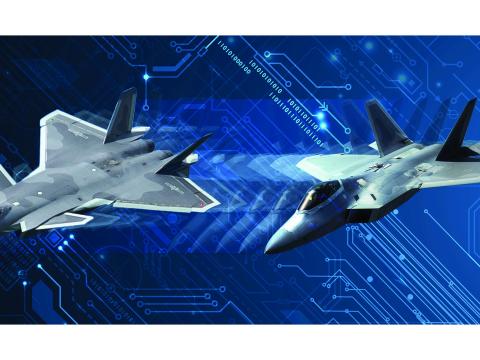Remembering the Past to Plan the Future
The anniversary of 9/11 serves as a reminder of the importance of planning the national security future. In the years since, the country strengthened relationships among departments and agencies, as well as with coalition partners and allies. It also has implemented tactics, techniques, procedures and technologies for sharing information across government and with international partners.
The Online Show Daily: Day 3
The final day of AFCEA TechNet Augusta 2014 kicked off with a solemn remembrance of the September 11, 2001 terrorist attacks that rocked the nation. The conference then, necessarily, moved on to the future.
But using lessons learned from the past to inform and shape the future was a common theme throughout the day. The anniversary of that tragic day served as a reminder of the importance of planning the national security future. In the years since, the country strengthened relationships among departments and agencies, as well as with coalition partners and allies. It also has implemented tactics, techniques, procedures and technologies for sharing information across government and with international partners.
Speakers brought up the Afghan Mission Network, indicating that lessons learned will be applied. In fact, the United States has since developed another network known as Pegasus, which it uses to share information with the Five Eye nations, those countries with which the United States has an intelligence-sharing agreement, noted Lt. Gen. Mark Bowman, USA, director, command, control, communications and computers/cyber and chief information officer (CIO), Joint Chiefs of Staff.
The network allows officials to send secure information along the Secret Internet Protocol Router Network (SIPNet). “My boss can send his counterpart in Australia a note from his SIPR terminal, and his counterpart in Australia gets it on his national secret terminal. We’re expanding it to voice over Internet protocol now. We’re expanding it to chat,” Gen. Bowman revealed. “A year ago, that thing didn’t exist. There’s more than 100,000 users on it now.”
Gen. Bowman also lauded the Defense Enterprise Cyber Range Environment as absolutely critical. "We need to trust, share and train on that range environment,” he said. “Recently, we were able to simulate a combatant command headquarters with a joint operations center, a maritime operations center and an air operations center, and we had red teams in there hammering on us to test for vulnerabilities.” The exercise allowed the department to continue to develop tactics, techniques and procedures for future cyberwarriors, he indicated, stressing the importance of training and adapting the force.
His office also partnered with the Army this past year on the service’s Network Integration Evaluation, which the service uses to identify, develop and test promising future technologies. “Our goal is for coalition partners to show up with their own kit and hook up [to the network],” he said. “We will be able to be better than we were before.”
The Joint Chiefs CIO also touched on the future structure of cyberforces. His big concern, he said, is that there are not yet enough highly trained personnel. “We have to agree that the training done by one service or one group is good enough for all. We have to decide on a standard and go,” Gen. Bowman offered. “When you don’t have enough people, you probably end up standing up the guys at the higher headquarters first. And what we don’t need is a bunch of Ph.D. experts with no operational experience telling us how to do stuff on the battlefield.”
He recalled serving in Operation Enduring Freedom with two network operators from Coca Cola, who contributed to a great team. With that memory in mind, he recommended filling the cyberforces with personnel from the Reserves and National Guard who conduct network operations in their day jobs.
Lt. Gen. Patrick Donahue, USA, deputy commanding general, U.S. Army Forces Command, also touted using lessons learned from the past to inform the future. He recalled having an excellent ability to command, control and communicate while remaining mobile when he served in Iraq. Today’s forces, he warned, are being bogged down with too much sophisticated equipment to be able to move quickly and efficiently. Brigades training at the combat training centers take an average of 48 hours to set up a tactical network, battalions about 24 hours. That is far too long, he indicated. And once they settle into a location, they have a tendency to “hunker down,” even when they are in danger, because the network is too difficult to disassemble and reassemble.
Even the chaplain praying over the morning meal spoke on the need to remember the past, even tragedies like the September 11 terrorist attacks, to instill hope for the future. Always remember. And forever hope.



